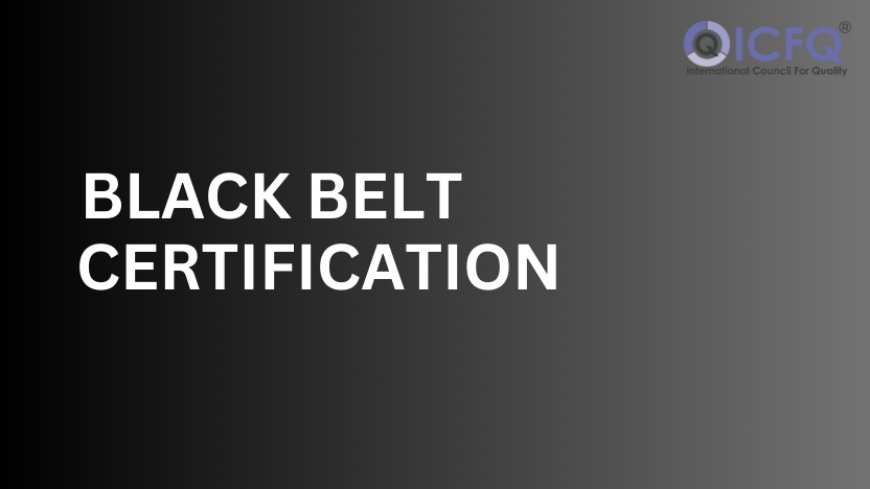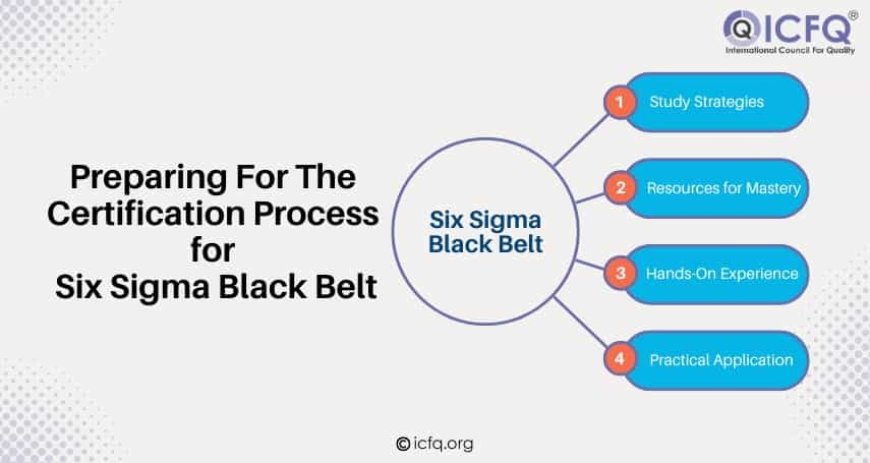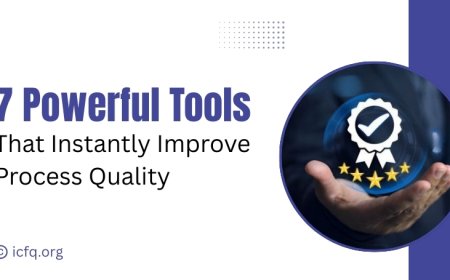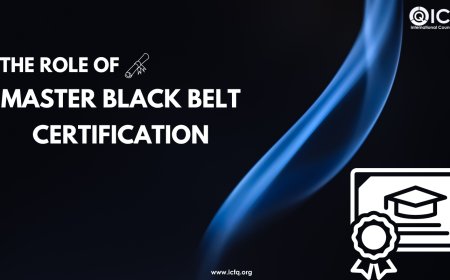The Path to Six Sigma Black Belt Certification
Accelerate your career with our Six Sigma Black Belt Certification program. Master the skills to drive quality improvement and operational excellence.

Six Sigma is a method used by companies to make their processes better. It's about finding problems and fixing them to make things work smoother and with fewer mistakes. This approach is used in many industries to improve how they operate.
In today's job market, having a Six Sigma Black Belt certificate is essential. It shows that you know how to use Six Sigma well. Companies want people with this certificate because they can help make the company work better. They can find problems and make things run more smoothly, which saves time and money. It helps you get better jobs because it shows you how to make things work better in a company.
How can aspiring professionals successfully navigate the Six Sigma Black Belt certification path?
To achieve this, they must first grasp the certification process, understanding the prerequisites and requirements set by certification bodies like ASQ or IASSC. Next, they should carefully choose a training program that aligns with their learning style and goals, whether through online courses, workshops, or self-study materials. Preparation for the certification exam should focus on effective study strategies and the practical application of Six Sigma tools. Throughout the journey, effective time management, motivation, and seeking support when needed are crucial. Continuing education and professional development play a key role in staying updated on industry trends and networking within the Six Sigma community, ultimately enhancing career prospects and expertise.
Understanding The Certification Process
Prerequisites and eligibility criteria: To pursue Six Sigma Black Belt certification, candidates typically need to fulfill certain prerequisites and eligibility criteria. While specific requirements may vary depending on the certification body, common prerequisites include:
-
Completion of a recognized Six Sigma Green Belt certification.
-
A certain amount of work experience in a relevant field, often ranging from 3 to 5 years.
-
Demonstrated proficiency in Six Sigma methodologies and tools through project work or practical experience.
-
Successful completion of required training programs or courses, which may vary in length and content,.
Choosing the Right Training Program
Candidates should explore different training options, such as online courses, workshops, or self-study materials. When selecting a program, consider factors like the reputation of the provider, course content, and flexibility. It's crucial to choose a program that suits individual learning styles and goals. Choosing the right training program is crucial for Six Sigma Black Belt certification.
-
Online courses offer flexibility and convenience.
-
In-person workshops provide interactive learning experiences and networking opportunities.
-
Self-study materials, like books and study guides, offer flexibility and affordability.
-
When choosing a training provider, consider factors such as reputation, course content, and support.
-
Ensure the curriculum aligns with your learning preferences and goals.
-
Select a training program that fits your schedule, learning style, and budget.
Challenges & Pursuing Process
Challenges in Pursuing Six Sigma Black Belt Certification:
-
Understanding the Certification Process: Complex rules and steps can be confusing initially, and different requirements may seem overwhelming.
-
Managing Commitments: Balancing personal, career, and study commitments requires effective time management.
-
Finding Reliable Training Programs: Numerous options can make it difficult to choose trustworthy training programs.
-
Overcoming Unexpected Obstacles: Difficulty grasping concepts or facing setbacks demands persistence and resilience.
Preparing For The Certification Process
To excel in the certification exam, candidates should adopt effective study strategies. Utilize resources like textbooks, practice exams, and online tutorials. Hands-on experience with Six Sigma tools through projects or simulations is invaluable. Practical application helps solidify understanding and prepares candidates for real-world scenarios.
Study Strategies: Create a schedule and break down the material into smaller parts. Use various resources, like online tutorials and practice exams, and practice problem-solving and applying Six Sigma tools regularly.
Resources for Mastery: Use study guides and materials provided by training programs, engage in hands-on exercises and case studies, and join online forums or study groups for additional support.
Hands-On Experience: Work on real-world Six Sigma projects to gain practical skills and also learn from experienced practitioners and seek their guidance. Reflect on past experiences to identify areas for improvement.
Practical Application: Apply Six Sigma concepts to daily tasks and projects. Practice using tools like DMAIC in problem-solving and seek feedback from mentors or peers to enhance skills.

Managing time efficiently is key to balancing study, work, and personal commitments. Create a study schedule and stick to it consistently. Stay motivated by setting achievable goals and celebrating milestones. When facing challenges like exam anxiety or difficulty understanding concepts, seek support from peers, mentors, or online forums.
Continuing Education and Professional Development
Continuous learning is essential for staying relevant in the field of Six Sigma. Stay updated on industry trends and best practices through reading, attending seminars, or joining professional associations. Engage in ongoing skill development and networking opportunities within the Six Sigma community to enhance career prospects and expertise.
In conclusion, navigating the path to Six Sigma Black Belt certification requires a clear understanding of the certification process, careful selection of training programs, effective exam preparation, and adept navigation of challenges along the journey. Perseverance, dedication, and a commitment to continuous improvement are paramount throughout this endeavor. By maintaining motivation and seeking support when needed, aspiring professionals can overcome obstacles and achieve their certification goals. I encourage readers to take the first step towards their certification aspirations with confidence and determination, knowing that their efforts will lead to enhanced skills, career opportunities, and contributions to quality management practices.





























